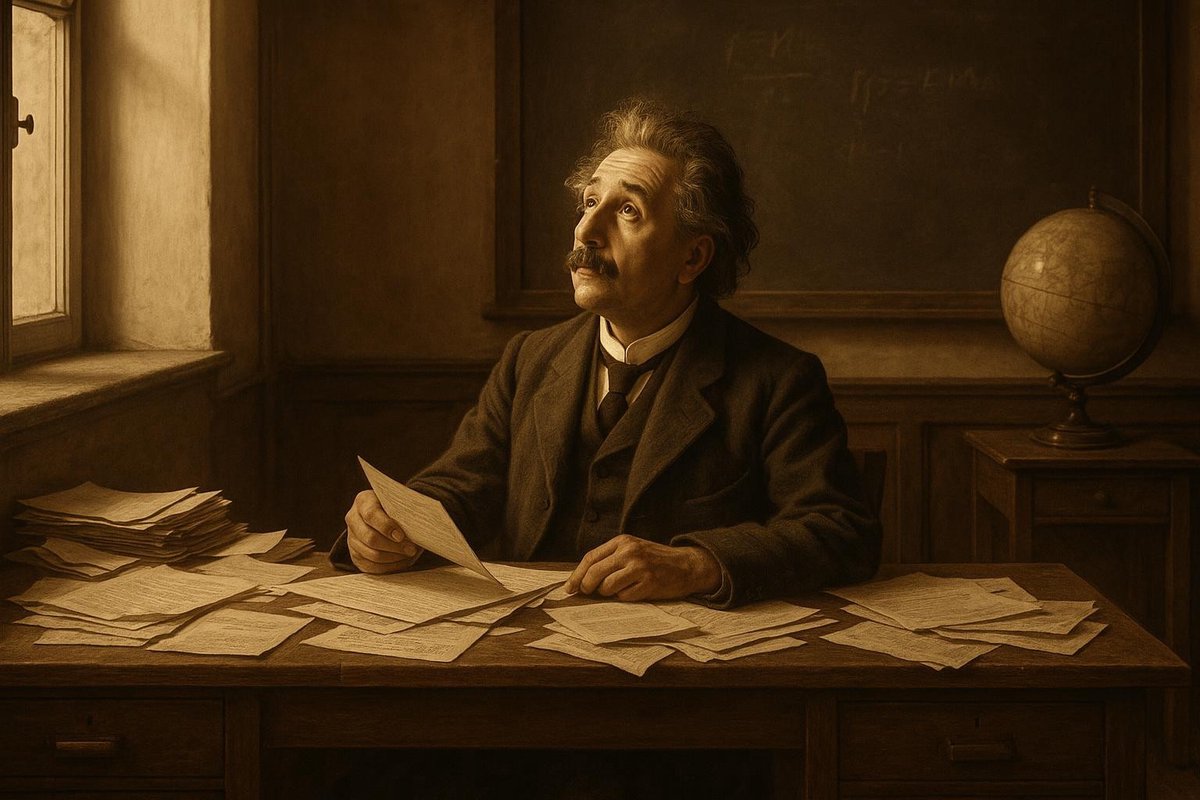
An Unexpected Daydream in Bern
It was 1905, a typical day at the Swiss Patent Office in Bern, where a young clerk named Albert Einstein pondered beyond his mundane duties. As he sifted through patent applications, his mind wandered into the mysteries of the universe. What if light could defy the conventional wisdom of speed? What if time and space were not as absolute as everyone believed? These daydreams were seeds of a groundbreaking idea that would soon bloom into the Theory of Relativity.
Origin: Challenging the Absolutes of Newtonian Physics
Before Einstein’s revelation, the scientific community revered Isaac Newton’s laws as the bedrock of physics. Newton had told a story of a universe governed by absolute time and space, a stage set for heavenly bodies to dance in predictable orbits. But Einstein was not convinced.
- Newtonian physics dominated science for two centuries, providing a seemingly complete picture.
- However, inconsistencies arose, particularly regarding light’s constant speed, as highlighted by the Michelson-Morley experiment.
- Einstein questioned the unshakeable absolutes that physicists took for granted.
Einstein’s mind grappled with these discrepancies, seeking simplicity where complexity seemed inevitable. He dared to imagine that time and space could be intertwined, flexible, and relative to the observer.
Key Figures: The Solitary Genius in a World of Skeptics
Albert Einstein was not always the scientific giant we revere today. In his early years, his ideas were met with skepticism. In fact, he worked largely in solitude, his theories quietly percolating amidst the bustling streets of Bern.
- Despite his isolation, Einstein was influenced by pioneers like Hendrik Lorentz and Henri Poincaré, who paved the way for relativity.
- His correspondence with physicist Mileva Marić, whom he later married, provided intellectual companionship.
- Max Planck, an early supporter, helped Einstein gain acceptance in the scientific community.
Einstein’s relentless pursuit of simplicity was a beacon in his solitary journey. He believed that the universe’s truths should be elegantly simple yet profound, a belief that continued to guide him.
Turning Point: The Miracle Year of 1905
In what is now known as Annus Mirabilis, or the Miracle Year, 1905 saw Einstein publish four papers that reshaped physics. The most revolutionary was his paper on the electrodynamics of moving bodies, introducing the Special Theory of Relativity.
- This theory postulated that the laws of physics are the same for all non-accelerating observers.
- It proposed that the speed of light is constant, regardless of the observer’s motion.
- Einstein’s famous equation, E=mc², emerged, linking mass and energy in a groundbreaking way.
This audacious work sent ripples through the scientific world, challenging the very foundation of physics and propelling Einstein from obscurity to prominence.
Impact on the World: A Universe Forever Changed
The Theory of Relativity has left an indelible mark on our understanding of the universe. It not only revolutionized physics but also altered our perception of reality itself.
- Relativity laid the groundwork for modern physics, influencing fields like cosmology and quantum mechanics.
- It has practical applications in technologies such as GPS, which relies on relativity for accuracy.
- Einstein’s ideas have become a cultural touchstone, inspiring countless works of art and literature.
Einstein’s vision of a unified, simple cosmos continues to inspire scientists and thinkers, reminding us of the beauty and complexity of the universe we inhabit.
Albert Einstein’s Theory of Relativity was more than a scientific breakthrough; it was a testament to the power of solitude, curiosity, and the relentless pursuit of simplicity. As we continue to unravel the mysteries of the cosmos, his legacy reminds us that even the most profound truths can emerge from the quietest corners of the mind.
Fuel Someone Else’s Curiosity
If this story of Einstein’s intellectual journey resonated with you, why not share it with someone else? Discussing these ideas can light a spark in others, just as it did with Einstein. Share the wonder and inspire curiosity around you!

Leave a Reply